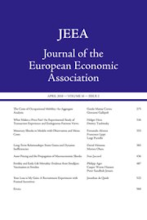We reconsider the effects of common monetary policy shocks across countries in the euro area, using a data-rich factor model and identifying shocks with high-frequency surprises around policy announcements.
We show that the degree of heterogeneity in the response to shocks, while being low in financial variables and output, is significant in consumption, consumer prices and macro variables related to the labour and housing markets. Mirroring country-specific institutional and market differences, we find that home ownership rates are significantly correlated with the strength of the housing channel in monetary policy transmission. We document a high dispersion in the response to shocks of house prices and rents and show that, similar to responses in the US, these variables tend to move in different directions. The original proposal had as an objective to investigate the differential country effects of monetary policy on housing and consumption in the Euro area. However, as the project developed, we decided to use an empirical methodology through a factor model that allowed for an expansion in scope in terms of variables being studied. Moreover, we also were able to contribute to the literature in two ways that were not initially expected. Firstly, on methodological ground, the paper’s main contribution lies in the construction of the external instrument series, which we base on changes in the 1-year Euro Overnight Index Average (EONIA) swap rate (i.e. the Overnight Index Swap (OIS) rate for the euro area) around policy announcements. In doing so, we overcome major data availability issues by combining intraday data with end-of-day data from different time zones, creating de-facto intraday series where actual intraday data is unavailable. Secondly, for each set of impulse responses (e.g. GDP across member countries), we calculate the coefficient of variation statistic, also known as relative standard deviation. The coefficient of variation for a variable is defined as the standard deviation of responses across countries with respect to the EA response, normalised by the size of the EA response.
One Money, Many Markets
One Money, Many Markets, Giancarlo Corsetti, Joao B Duarte, Samuel Mann, Journal of the European Economic Association, Vol 20, Issue 1, pp. 513–548 (2022)
We study heterogeneity in the transmission of monetary shocks across euro-area (EA) countries using a dynamic factor model and high-frequency identification. Deploying a novel methodology to asses the degree of heterogeneity, we find it to be low in financial variables and output but significant in consumption, consumer prices, and variables related to local housing and labour markets. We show that a large proportion of the variation in the responses to monetary shocks can be accounted for by differences in some characteristics of these markets across EA member countries: the share of adjustable mortgage contracts, homeownership rates, shares of hand-to-mouth and wealthy hand-to-mouth consumers, as well as wage rigidity.
The paper was presented at several conferences and seminars:
- University of Toulouse ADEMU conference
- University of Cambridge
- 12th Portuguese Economic Journal Meeting
- 7th LubraMacro
- Bank of Italy
- Bank of Portugal
- European University Institute - ADEMU final conference
- 34th Annual Congress of the European Economic Association
Finally, a policy brief was published in the ADEMU project: https://ademu-project.eu/policy-brief-one-money-many-markets
In the future, we plan to use economic theory to study how institutional differences can explain the observed heterogeneity in monetary transmission.


